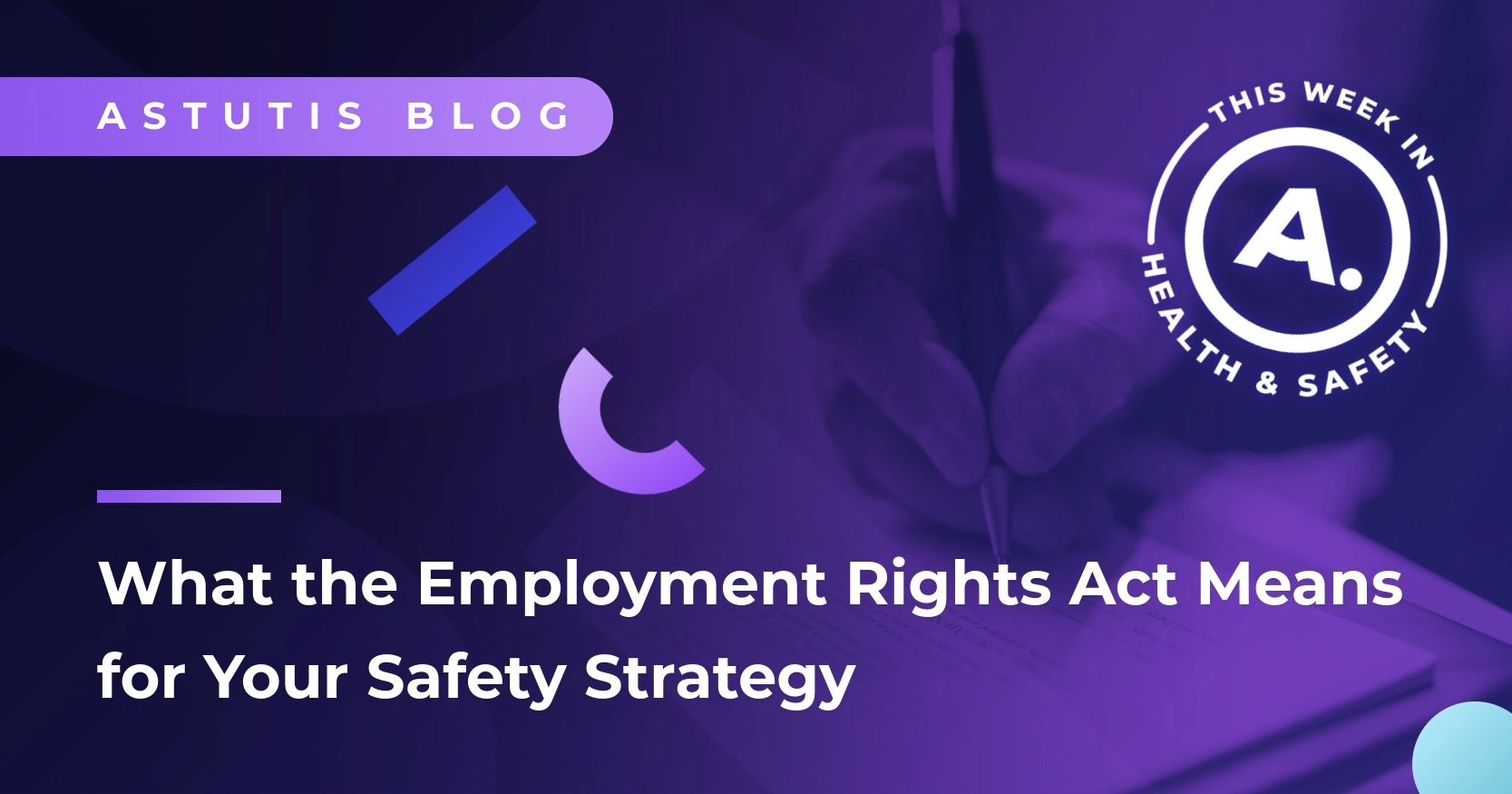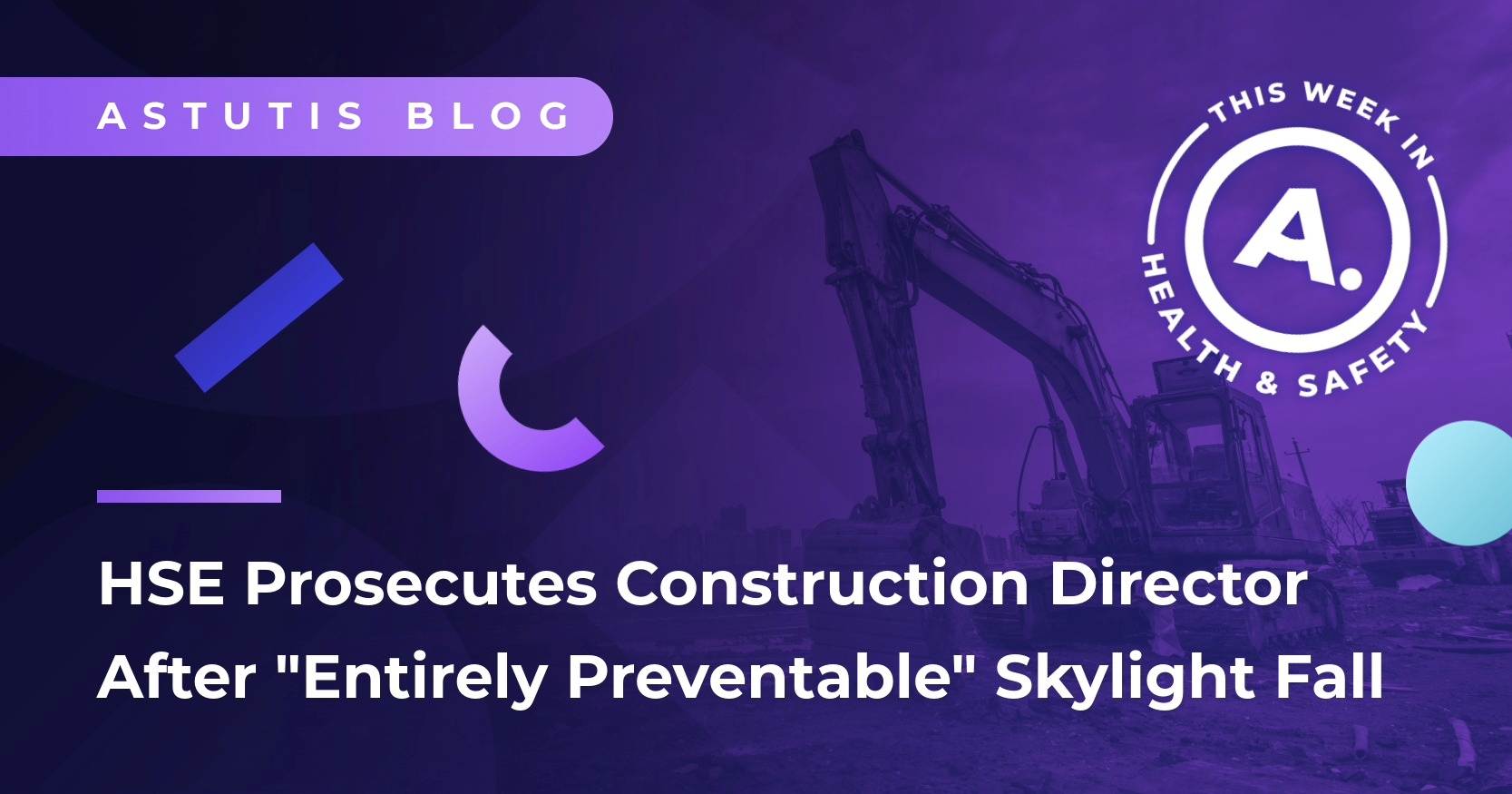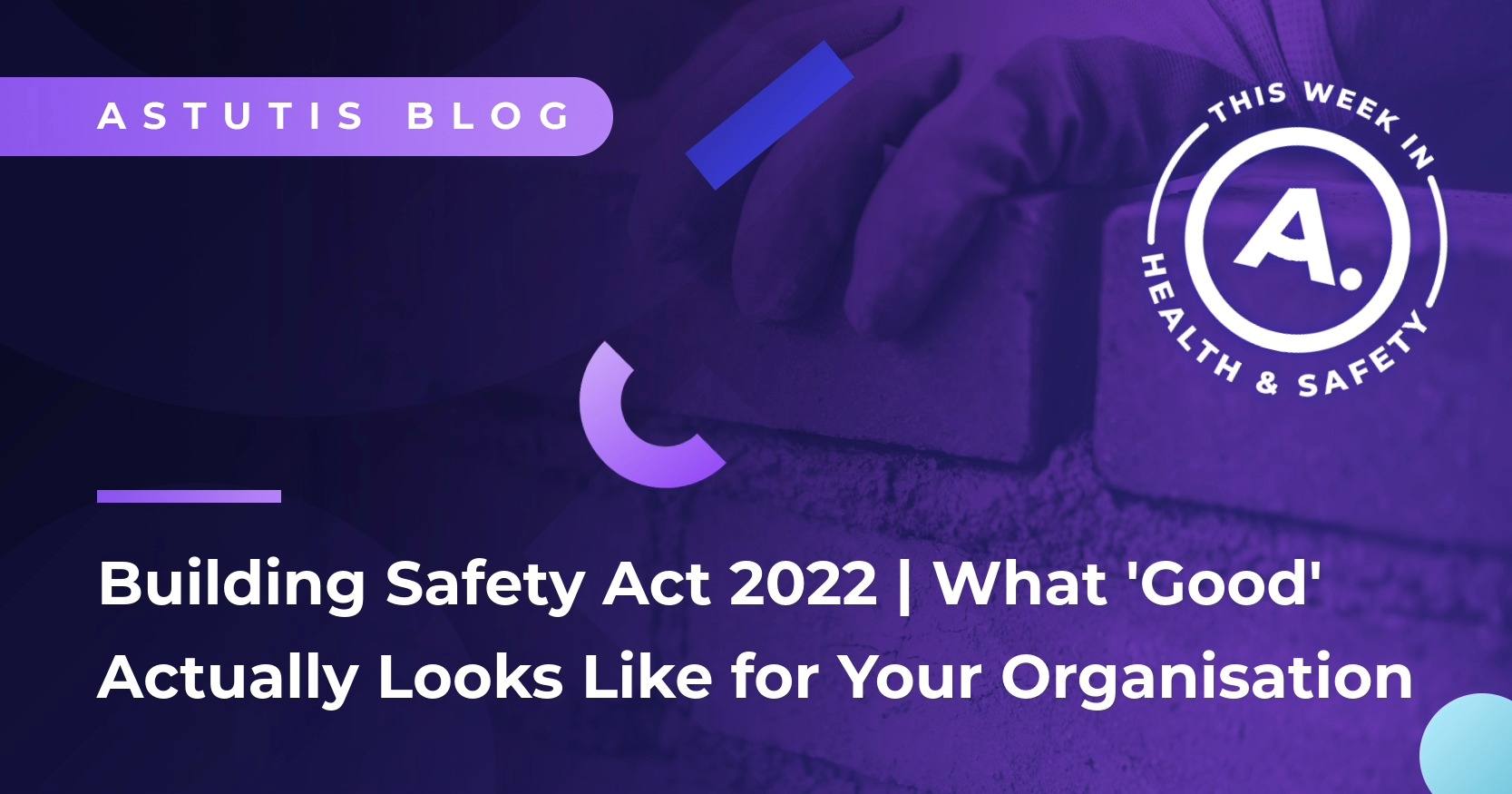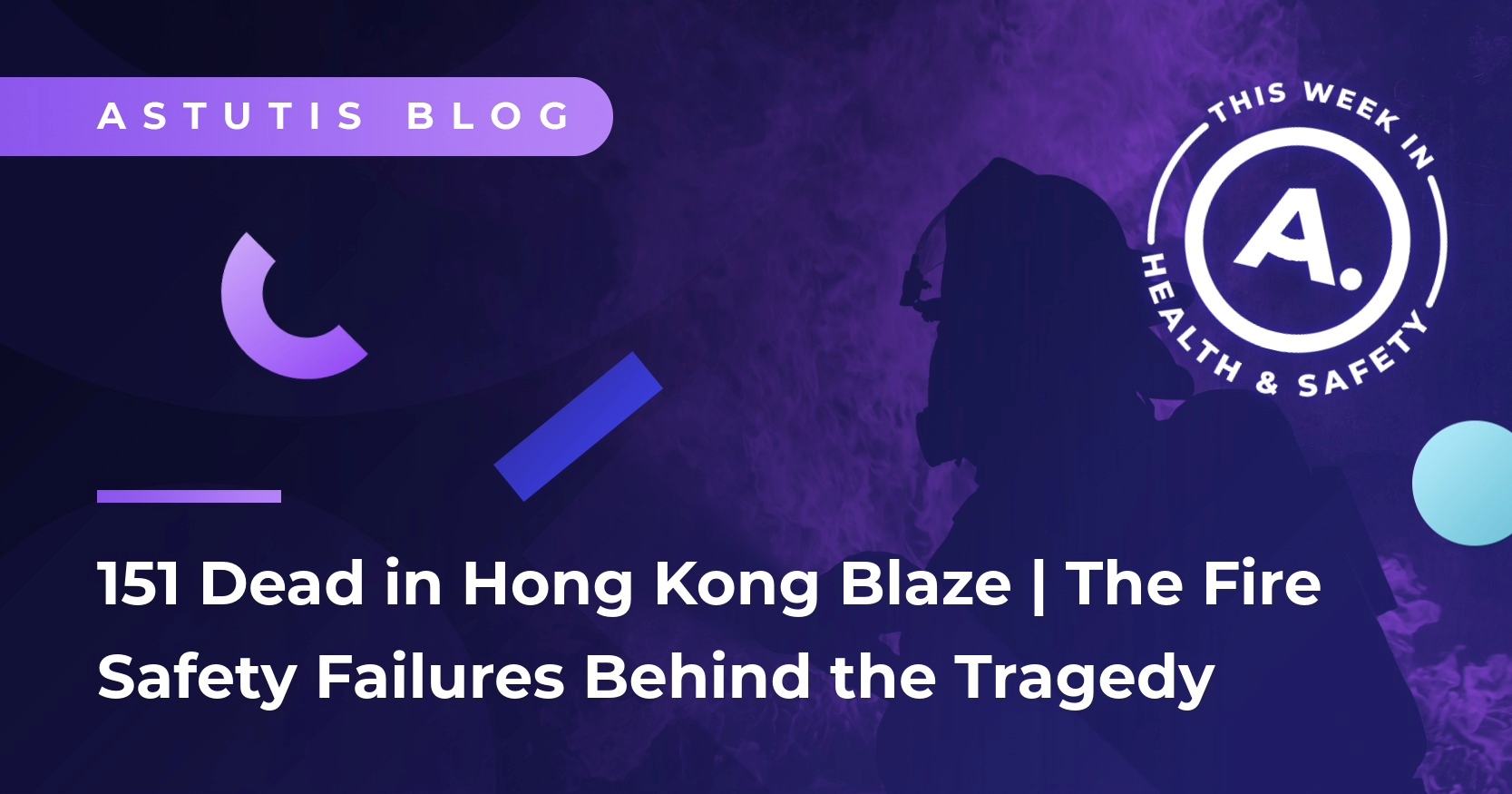Corporate Manslaughter Act and its Impact on Organisations
The Corporate Manslaughter and Corporate Homicide Act (The Act) has now been in place since 2007 but what impact has it made in terms of the conviction and punishment of organisations?
The Corporate Manslaughter and Corporate Homicide Act (The Act) has now been in place since 2007 but what impact has it made in terms of the conviction and punishment of organisations?
Let’s consider the following 4 questions:
- Why did we need a new Act?
- What needs to be proved to secure a conviction?
- What punishment options does the judge have under the Act?
- What successful convictions have there been to date?
1) Why did we need a new Act?
Prior to the Act, to be convicted of Corporate Manslaughter, an organisation had to be found guilty of “gross negligence” towards the deceased and this guilt had to be committed by the “controlling mind” of the organisation. This controlling mind inevitably would have needed to be an individual at a very senior position. In other words, no conviction under personal manslaughter meant almost certainly no corporate manslaughter conviction.
Within a small organisation, where the senior people/directors have a more “hands on” role, this may have been relatively easy to prove compared to a large organisation with many layers of management. Consequently, successful convictions for corporate manslaughter tended to be limited to small organisations.
Past major disasters
Since the mid 1980’s, there have been several major disasters resulting in loss of life – Herald of Free Enterprise (Zeebrugge ferry), Piper Alpha, Southall Rail crash to name but a few. Even though the reports following the public enquiry into many of these disasters were very scathing of the organisation’s management of health and safety (the report of the Herald of Free Enterprise even stated that: “From the top to the bottom the body corporate was infected with the disease of sloppiness”), none resulted in a conviction of corporate manslaughter due to the issue of the proof of the “controlling mind”.
2) What needs to be proved to secure a conviction? Over the years this has resulted in public pressure being exerted on the authorities and cries of “why aren’t senior people in these organisations being held to account” and “justice has not been served”. As a result, the Corporate Manslaughter and Corporate Homicide Act 2007 was passed.
According to the Corporate Manslaughter Act, an organisation can be found guilty if:
- The way in which an organisation’s activities are managed or organised...
- Causes a person’s death
- Amounts to a gross breach of ...
- A relevant duty of care owed by the organisation to the deceased
The Act also states that:
“An organisation is guilty […] only if the way in which its activities are managed or organised by its senior management is a substantial element in the breach […]”
It is a crown court offence. The jury needs to decide whether there was a gross breach and consider whether the evidence shows that the organisation failed to comply with health and safety law related to the alleged breach; if so, how serious that failure was and how much of a risk of death it posed.
The jury may also: - consider the extent to which evidence shows that there were attitudes, policies, systems or accepted practices within the organisation that were likely to have encouraged any such failure or to have produced tolerance of it
- have regard to any health and safety guidance that relates to the alleged breach.
3) What punishment options does the judge have under the Act?
It must be remembered that The Act applies only to organisations and therefore no individuals will be fined or imprisoned as a result of it. (Personal manslaughter and offences under the Health & Safety at Work Act however can still be used against individuals).
Once the organisation has been found guilty, the judge can use any/all of the following punishment options:
Remedial Order
Directing the organisation to put right / remedy the causes of the circumstances which led to the fatal incident.
Publicity Order
An order which forces the organisation to publicise the fact that it had been found guilty of Corporate Manslaughter.
One such order (see Fig.1 below) was issued to Mobile Sweepers (Reading) Ltd in 2014.Unlimited Fine
The fine for an offence can truly be unlimited but this raises the questions of the fine amount fitting the crime. How much of a fine is too much (or too little) and what about the organisation’s ability to pay whilst not causing the organisation to go into receivership – resulting in no fine being paid and people losing their jobs.
Definitive Guideline on Corporate Manslaughter and Health & Safety Offences Causing Death
Shortly after The Act became law, in 2010, the Sentencing Guideline Council published a “Definitive Guideline” on “Corporate Manslaughter and Health & Safety Offences Causing Death” to the courts. This Guide stated factors that needed to be taken into consideration and included the seriousness of the offence:
- how far up the organisation did the offence go?
- Is the breach common in the organisation?
- Are there any mitigating factors and the size and nature of the organisation?
It also stated however that:
“A fixed correlation between the fine and either turnover or profit is not appropriate”
and
“The appropriate fine will seldom be less than £500,000 and may be measured in millions of pounds.”
Updated guidance: Health and Safety Offences, Corporate Manslaughter and Food Safety and Hygiene Offences Definitive Guideline
However, the courts have now implemented new and updated guidance from the Sentencing Council: “Health and Safety Offences, Corporate Manslaughter and Food Safety and Hygiene Offences Definitive Guideline”.
This came into force in England and Wales for sentencing on or after 1 February 2016, regardless of the date of the offence, following an apparent desire to treat health and safety breaches as seriously as other offences such as financial irregularities.
Subsequent use of these guidelines appears to be giving the courts greater confidence when deciding the level of fine, resulting in an observed increase in the number of fines exceeding £1million in the last two years. The guideline allows the judge to follow established criteria when deciding the appropriate level of fine, including taking into consideration amongst other things, the turnover of the organisation.
4) What successful convictions have there been to date?
Since 2017 to the end of 2017 there have been 25 convictions, four of these in 2017 (see Table 1 in Appendix at the end of the post). Most of these companies have been relatively small in size and the average fine for the first 24 cases was £288,354. The latest case at the time of writing this article (Martinisation, see below) resulted in £1.2M fine.
It can be said that the successful cases so far gives no interpretive case law, as these cases were all involving small companies and the terms:
- “gross breach of a relevant duty of care” and
- “the way in which its activities are managed or organised by its senior management is a substantial element in the breach”
Arguably they have yet to be tested in a case against a large company with many layers of management and/ or complex structures.
The one case that has resulted in a fine over £1million is that of HSE v Martinisation (London) Ltd, unreported 19 May 2017, Central Criminal Court:
- Two workers died in November 2014 when they fell from a balcony while trying to lift a sofa using ropes.
- The Old Bailey heard that the sofa delivery company had recommended that an external furniture lift was hired at a cost of £848.
- Company director, Martin Gutaj, replied saying "Unfortunately, we do not have time for all that. Please deliver the sofa and we will get it up to the flat".
- Gutaj was convicted under HSWA and jailed for 14 months;
The company was found guilty of Corporate Manslaughter and the Health and Safety at Work Act offences –and fined £1.2M and £72,000 costs.
So has the Corporate Manslaughter Act achieved its aim?
Whilst The Act was meant to clarify the terms of Corporate Manslaughter and to potentially make conviction of the crime easier (especially in larger organisations), there is debate as to whether it has achieved its original objectives.
With only 25 successful convictions in 10 years the courts have hardly been overwhelmed with prosecutions taken by the Crown Prosecution Service (CPS). Furthermore, all of the successful cases have been against relatively small companies and arguably most of them may have been found guilty of corporate manslaughter under the old definition, especially if the senior managers also had personal manslaughter charges against them.
It seems that the legal and health and safety professions are waiting for a strong test of The Act where a successful prosecution of a large company occurs. This will serve to help define some of its terms and provide interpretive case law, in addition to raising its profile amongst large organisations and corporate bodies. The investigation into the Grenfell Tower fire may well be a watershed point for the Corporate Manslaughter Act.
Need help on the Corporate Manslaughter legislation?
If you or your Senior Executives need guidance on how to be compliant in line with the Corporate Manslaughter Act, contact us about IOSH Safety for Executives and Directors training or any company specific Directors' briefing or consultancy.
Post writers
Andrew Ashford CMIOSH (qualified barrister and NEBOSH examiner) presented to Astutis consultants on the impact of the Corporate Manslaughter Act and Andrew Froude CMIOSH has written his understanding of this legal update.
Appendix
Convicted company | Nature of incident | Sentence date | Fine | Plea | Trading? |
Geologic trench collapsed | 15 Feb 2011 | £385,000 | Not guilty | No | |
JMW Farms [2] | Bin fell from forklift tines | 8 May 2012 | £187,500 | Guilty | Yes |
Fell 13m through roof light | 20 July 2012 | £480,000 | Guilty | Yes | |
J Murray and Son [4] | Pulled into unguarded machine | 15 Oct 2013 | £100,000 | Guilty | Yes |
Struck by speedboat | 22 Nov 2013 | £135,000 | Guilty | No | |
Falling street sweeper hopper | 2 Feb 2014 | £8000 | Guilty | No | |
Falling two tonne limestone block | 18 Nov 2014 | £150,000 | Not guilty | No | |
Struck by debris from autoclave explosion | 7 Nov 2014 | £500,000 | Not guilty | No | |
Struck by moving machinery | 28 Jan 2015 | £75,000 | Guilty | Yes | |
Peter Mawson [10] | Fell 7.6m through roof light | 3 Feb 2015 | £200,000 | Guilty | No |
Pyranha Mouldings [11] | Trapped in oven when it was turned on | 25 March 2015 | £200,000 | Not guilty | Yes |
Nicole Enterprises | Falling static caravan | 27 March 2015 | £100,000 | Guilty | Yes |
Kings Scaffolding | Fell 4m through roof light | 12 Oct 2015 | £300,000 | Guilty | Yes |
Pulled into unguarded metal lathe | 14 July 2015 | £150,000 | Guilty | No | |
CAV Aerospace [13] | Overstocked metal sheets collapsed | 31 July 2015 | £600,000 | Not guilty | No |
Linley Developments [14] | Structurally unsound wall collapsed | 24 Sept 2015 | £200,000 | Guilty | No |
Faulty automated gate | 7 Dec 2015 | £50,000 | Guilty | No | |
Baldwins Crane Hire [16] | Crash involving crane with faulty brakes | 22 Dec 2015 | £700,000 | Not guilty | Yes |
Sherwood Rise | Failure to provide adequate care | 5 Feb 2016 | £300,000 | Guilty | Yes |
Monavon Construction [17] | Fell 3.7m into new-build’s basement | 27 June 2016 | £500,000 | Guilty | No |
Bilston Skips [18] | Fell 2.4m from top of skip | 16 Aug 2016 | £600,000 | Not guilty | No |
SR and RJ Brown [19] | Fell from building roof | 16 March 2017 | £300,000 | Guilty | Yes |
Koseoglu Metal Work [20] | Fell through roof light | 19 May 2017 | £300,000 | Guilty | Yes |
Ozdil Investments [20] | Fell through roof light | 19 May 2017 | £500,000 | Not guilty | Yes |
Fell from balcony during lifting operation | 7 July 2017 | £1,200,000 | Not guilty | No |
Related Blogs

Real Life Stories









